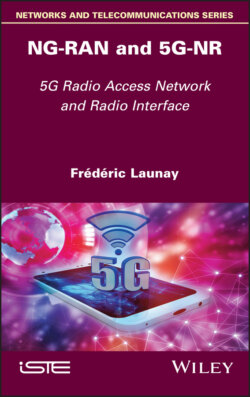Читать книгу NG-RAN and 5G-NR - Frédéric Launay - Страница 17
1.2.2. AMF (Access management and Mobility Function)
ОглавлениеThe AMF (Access management and Mobility Function) supports:
1 – the registration of the mobile;
2 – the access control and the management of mobility on both the NG-RAN and Wi-Fi network access (non-3GPP access);
3 – network slicing.
The mobile and the AMF exchange data using the NAS (Non-Access Stratum) protocol.
The registration function allows the attachment of the mobile, the detachment of the mobile and the update of its location.
During the attachment, the AMF records the TAI (Tracking Area Identity) location and private identity of the mobile and assigns a 5G-GUTI (5G Globally Unique Temporary Identifier) to the mobile.
5G-GUTI replaces the encrypted private identifier SUCI (Subscription Concealed Identifier) and the private identifier SUPI (Subscription Private Identifier).
Once the attachment procedure is completed, the AMF selects the SMF, according to the DNN (Data Network Name) and the network slice indicator NSSAI (Network Slice Selection Assistance Information).
A load balancing procedure is applied when different SMF can be selected.
The DNN is either communicated by the mobile to the AMF during attachment, or retrieved from the subscriber’s profile from the UDR (Unified Data Repository).
The AMF manages a list of TAIs allocated to mobiles, in which the mobile, in the standby state, can move without contacting the AMF to update its location.
The AMF manages the addition and removal of the TNL (Transport Network Layer) association with the entities of the NG-RAN node. In the event of a handover, the source AMF will release the TNL association with the source NG-RAN node and redirect the TNL association to the target NG-RAN node.
